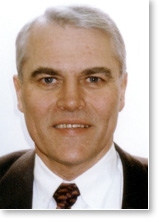Peak performers have significantly higher degrees of brain and psychological development than the average population, according to a new study of brain functioning and measures of psychological development.
The study conducted on world-class athletes found that, compared to normal athletes, those competing at the highest levels have higher levels of brain integration, suggesting that higher psycho-physiological growth underlies higher performance. The research was published in the Scandinavian Journal of Medicine & Science in Sports.

Dr. Fred Travis
The study was conducted by Dr. Harold Harung, associate professor at Oslo University in Norway and Dr. Frederick Travis, director of the Center for Brain, Consciousness and Cognition at Maharishi University of Management in Fairfield, Iowa. The study compared 33 athletes who placed among the 10 best performers in competitions such as the Olympics and World Championships and compared them with 33 athletes who actively train and compete at a senior level but don’t normally place among the top 50% in the Norwegian Championships.
The world-class athletes also scored higher on measures of self and moral development, and rate of habituation to stressors.

Dr. Harold Harung
“These results are very interesting to us, as they show a clear correlation between mind-brain development and peak performance,” Dr. Harung said. “As has been long hypothesized, achieving one’s full potential is intimately related to developing more integrated brain functioning.”
Dr. Harung also indicated that the findings show that the level of brain integration in world-class athletes is similar to that seen in individuals who had practiced the Transcendental Meditation technique for an average of seven years.
 The Brain Integration Scale used in the study was first developed by Dr. Travis to measure the long-term effects of the practice of the Transcendental Meditation technique. The scale looks at three brain measures: 1) broadband frontal EEG coherence, a measure of coordinated functioning of frontal executive brain areas; 2) higher alpha and lower gamma frontal and central EEG power, a processing style characterized by inner directedness and less absorption in outer boundaries; and 3) contingent negative variation during reaction time tests, which is a measure of efficiency of applying mental and motor resources to the task.
The Brain Integration Scale used in the study was first developed by Dr. Travis to measure the long-term effects of the practice of the Transcendental Meditation technique. The scale looks at three brain measures: 1) broadband frontal EEG coherence, a measure of coordinated functioning of frontal executive brain areas; 2) higher alpha and lower gamma frontal and central EEG power, a processing style characterized by inner directedness and less absorption in outer boundaries; and 3) contingent negative variation during reaction time tests, which is a measure of efficiency of applying mental and motor resources to the task.
“These results are also consistent with those that we’ve found in world-class managers,” Dr. Harung said. “This scale actually may show how the brains of top performers in any field are different from those of others.”
He said that there are interesting applications of this, such as helping to identify potential top athletes or managerial candidates, or using a method such as the Transcendental Meditation technique to culture that style of functioning in the brain to reach one’s full potential.



